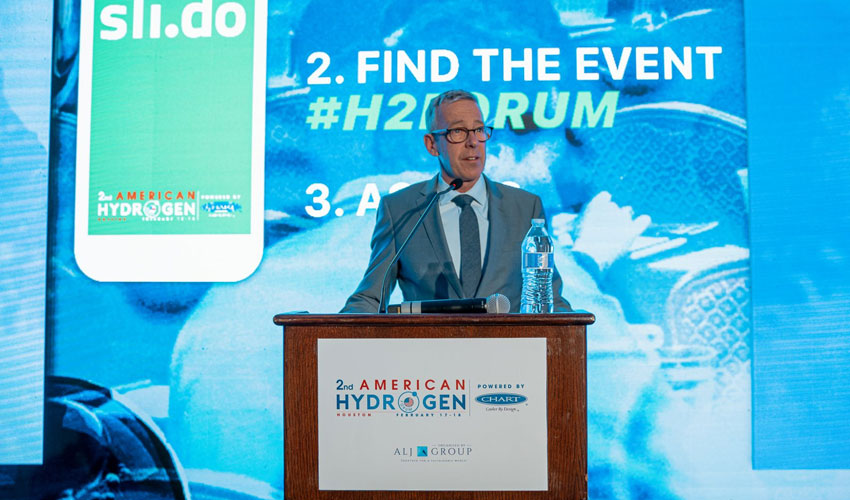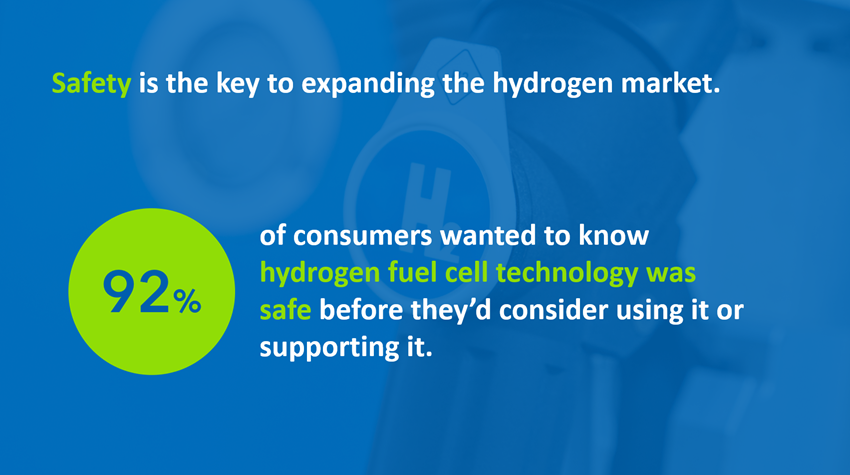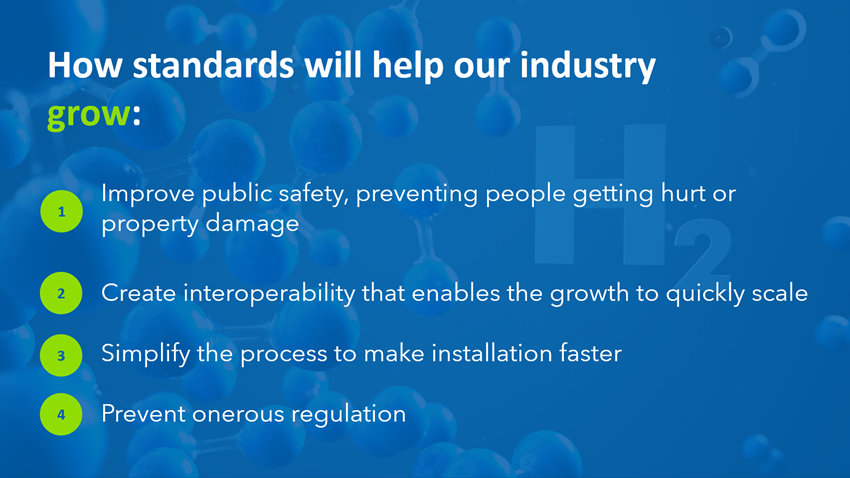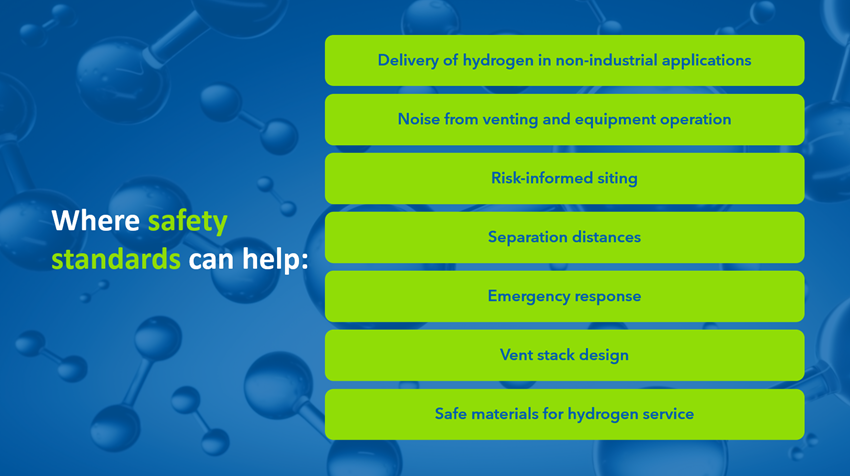Accelerating the Hydrogen Economy through Safety Standards
February 28, 2022
On February 17, 2022, our President and CEO Rich Gottwald spoke to the 2nd American Hydrogen Forum on accelerating hydrogen safety. Rich has spoken repeatedly on the need for uniform safety standards to fuel the hydrogen technology industry’s expansion, and welcomed the opportunity to share our campaign with stakeholders from the government, research, production, distribution, and service sectors at this event.
As the Compressed Gas Association (CGA) works to position our organization within the clean energy debate and encourage stakeholder collaboration in the search for sustainable hydrogen economy solutions, we wanted to share key findings from Rich’s presentation below.
Safety is the Key to Expanding the Hydrogen Market
Some stakeholders in the hydrogen industry may think of safety standards as an impediment to action – a step to take or box to check that brings little value or stifles innovation. But in fact, quite the opposite is true: safety standards are critical for any industry to grow smoothly and quickly.
In fact, the U.S. Navy SEALS have a saying that emphasizes this point: “Slow is smooth and smooth is fast.”
The military operates in a high-stakes world, and this expression serves as a reminder that when we slow down and do things right, we ultimately move faster than when we rush.
We need safety standards if we’re going to accelerate growth in the hydrogen vehicle fueling industry. They’re what will enable industry players to grow much faster. When polled, we found that 92% of consumers won’t use hydrogen fuel cell technology unless they know it’s safe.
While consumers need to have confidence in the safety of hydrogen, safety standards aren’t just for easing public opinion. They also help to enable acceptance from regulators and other authorities to create a vital pathway for regulatory approval – a key to industry growth.
Hydrogen demand only continues to grow, driving the need for consistent safety standards. A recent report from the National Renewable Energy Laboratory (NREL) of the U.S. Department of Energy predicted that demand from hydrogen could increase as much as four-fold by 2050, potentially reaching 41 million metric tonnes per year. But we can only achieve that number quickly with the smart development and harmonization of safety standards.
A recent report from U.S. DOE’s National Renewable Energy Laboratory predicts hydrogen demand could increase as much as 4X by 2050, reaching 41 million metric tonnes per year.
Safety Standards for Industry Growth
Safety standards have a significant role to play in helping the hydrogen industry achieve its enormous potential:
- They improve public safety, preventing injuries to people or damage to property – which would erode trust in the industry. If people are afraid of hydrogen because they think it’s dangerous, they’re not going to use it.
- Standards also create interoperability that helps companies scale more quickly. When simple things like connectors are common or the way a dispenser is used remains consistent – regardless of manufacturer – people will adopt it sooner. They don’t have to be concerned that their vehicle won’t be able to connect at the next fueling station.
- Standards simplify the process to make installation faster, which also helps businesses grow quickly. This is true from design and permitting to installation, start-up, and use. Having clear standards makes the process smooth, making it fast.
- Applying safety standards can also help to prevent onerous regulation. This matters because appropriate and effective regulations can be useful and help foster growth. Inappropriate and ineffective regulations – those that often get promulgated in response to incidents that occur where standards aren’t in place – just erect hurdles and likely won’t address the problems they’re intended to correct.
For example, a hydrogen truck can’t be driven through some tunnels because of concerns over safety and the potential to create hazardous conditions. That’s a problem for delivery and growth in many regions across the country and for the growth of hydrogen mobility. By establishing safety standards and communicating with regulators on how to best address these hazards, we can adapt the regulations so the trucks can safely travel to fueling stations.
“Standards simplify the process to make installation faster, which also helps businesses grow quickly. This is true from design and permitting to installation, start-up, and use. Having clear standards makes the process smooth, making it fast.”
Here are several examples where safety standards can help:
- hydrogen system siting and personnel exposure distances
- hydrogen delivery to near-consumer use points
- noise mitigation of hydrogen venting and system operation
- updated first responder guidelines for hydrogen delivery vehicles and FCEVs (fuel cell electric vehicles)
- material suitability for hydrogen service
CGA’s Role in Moving the Hydrogen Industry Forward
At CGA, we don’t want to stymy growth by telling companies and businesses what they can and cannot do without reason. We want to be a partner, working with members of our association and other industry stakeholders to put safety at top of mind without stifling innovation. To do this, we focus on performance-based outcomes rather than prescriptive requirements in areas of developing technology.
With the launch of our hydrogen “Safety is Step One Campaign” last year, we’re excited about what this year will bring in terms of expanding and evolving safety standards as hydrogen technologies continue to emerge.
CGA is a leading voice in the development of safety standards for emerging hydrogen technologies and markets. As the hydrogen industry continues to grow and develop, CGA’s extensive knowledge and expertise on standards will be essential and help build confidence in this expanding market.
To learn more, see our Hydrogen Safety Initiative.






